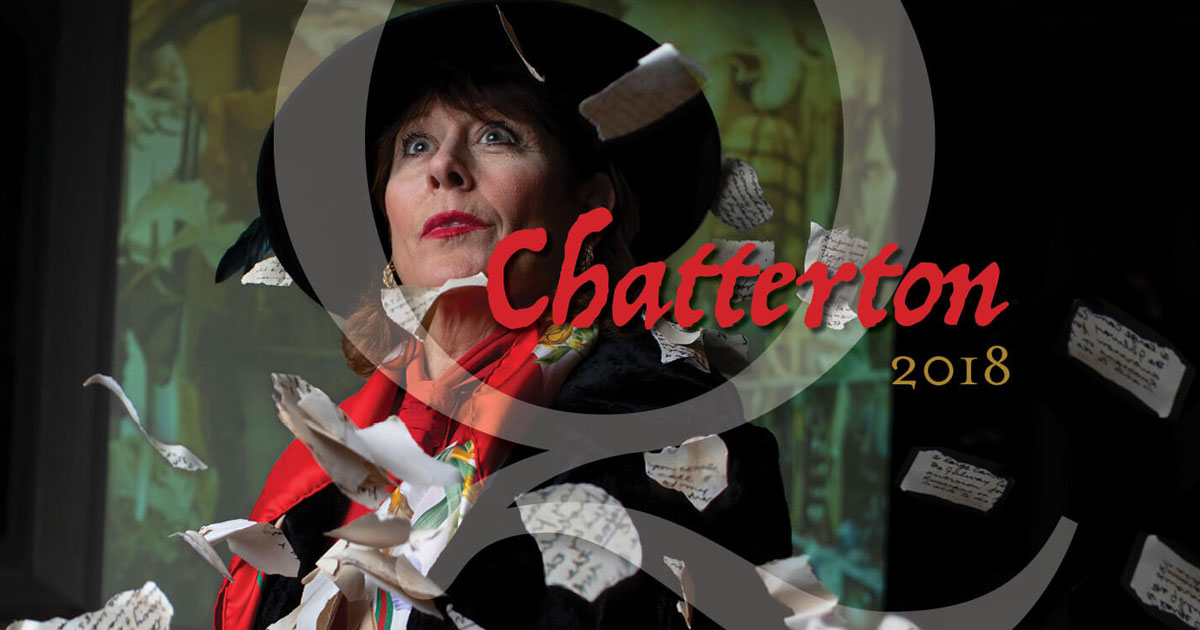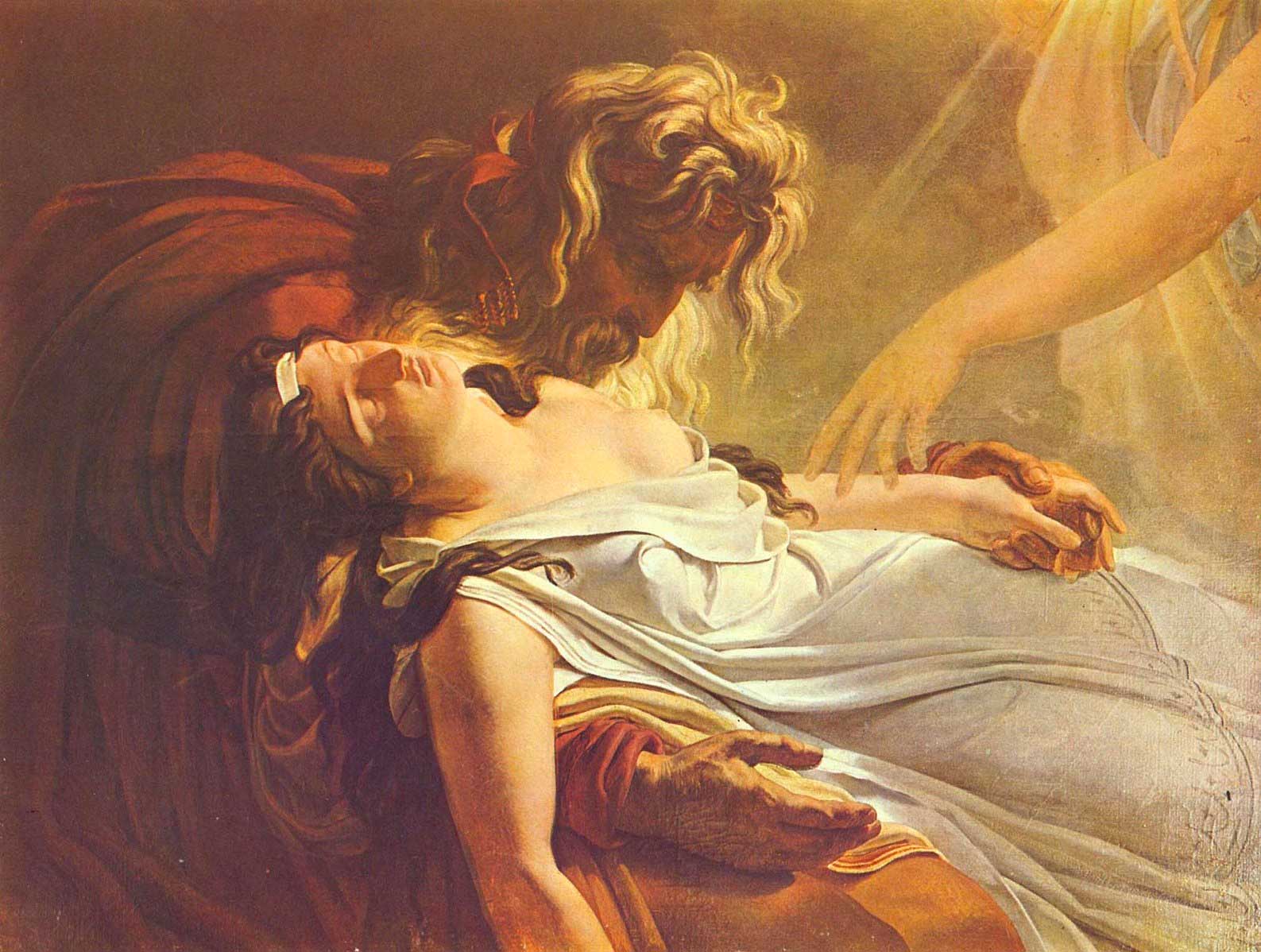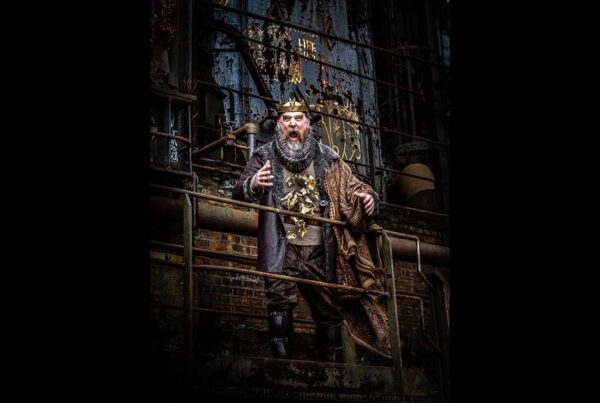
We’re halfway through Part 2!
Fun fact related to the questions of forgery: “The Lost Art of Eighteenth-Century Flute Playing” is not a “real” book. In the novel, it is attributed to James Macpherson. Macpherson is an 18th century poet who gained fame as a “translator” of a found manuscript of epic poems from the 3rd century. While the authenticity debate was, at the time, fierce and political, generally the consensus is the Macpherson mostly invented the poems himself.

Ancient or not, the Ossian cycle by Macpherson was influential and popular and the characters, like Malvina, inspired many other works of art and literature. This photo is a reproduction of “The Death of Malvina,” by Dutch-French Romantic painter Ary Scheffer circa 1802.
We also had some discussion on the about authenticity. Jim Kincaid asked us to defend (or attack) the following proposition: “Originality is a myth; all art involves rearrangement of words, images, characters, plots used over and over. It is all copying.” Karla responds with “all art is an endless discussion about the human condition, by we humans experiencing our state of being. Though there is no new thing to say, everyone’s experience, every ‘speaker’ or artist, is completely unique.” What do you think?
This week I ask three questions, all about Charles:
- Why do you think Charles does not proceed with his own poetry?
- What do you think is the significance of his obsession with eating books?
- In addition to references to headaches and illnesses, if we think to the end of chapter 6, Charles “put his head upon his arm, and wept” after reading some verses from the manuscript. What do you think is wrong with him?
Finally, if you have a spare hour, you can listen to Harold Bloom discuss The Anxiety of Influence, which Charles mentions to Harriet.
Listen now





It seems pretty clear that Charles is suffering from something serious, most likely a brain tumor, as shown by the episode at the end of chapter 3. (Note that he apparently hallucinates a meeting with red-haired Chatterton.) And though he tries to alleviate Vivien’s fears, he instinctively knows there is something profoundly wrong with him. Death is on his mind, so he reacts to the lines “And you who soon will join th’ unhonoured Dead, Closing your Eyes to Fate’s unjust decree…” by putting his head down and weeping.
This foreshadowing of his death may be why he finds himself unable to write any more poetry, while also deceiving himself by saying that he has all the time in the world to write. He becomes obsessed with Chatterton, probably due to the ‘romance’ of the young suicide combined with the hope that he didn’t die young at all, but rather lived into middle age. Charles himself would like to live longer, but he’d also like to make a name for himself through the discovery of the Chatterton painting and papers. Though Edward immediately looks at the painting and says “It’s a fake” (similar to the child in ‘the emperor’s new clothes’), Charles desperately needs it to be real, to be the one great discovery of his life before he dies.
As for his pica of eating books: a way of literally ingesting the power inherent in books? Or making his beloved books literally part of himself?
I really like the linking of Charles’s hope that Chatterton lived into middle age being connected to his hope that he himself lives longer!
Part 2 gives us several examples of morally-suspect behavior revolving around forgery and plagiarism. 1) Merk has painted the last several years of Seymour’s works, passing them off as Seymour’s. He then in essence blackmails the dealer Sadleir into not saying anything, thus maintaining the duplicity. 2) Harriet realizes that her use of Bentley’s plots has been discovered. 3) Chatterton is convinced by Joynson to forge the writings of earlier, famous poets.
Is one of these more serious than the others? Which one is damaging to the most people? Those who buy fake Seymours are financially hurt if the fakery is discovered, but it may never be. Neither Phillip nor Charles seem particularly upset by Harriet’s duplicity, believing that plots are used and reused, and in Harriet’s case the original author is dead and nearly forgotten. And if Chatterton writes as well as the poets he’s forging, who is harmed? Not the people who read the poems for pleasure, but only future scholars.
Merk: “Who is to say what is fake and what is real?
Joynson: “You prove your Strength by doing their Work better than ever they could, and then by also doing your own.”
Charles: Chatterton wasn’t a forger or plagiarist. “He was the greatest poet in history.”
Yet aren’t we all diminished by these types of deception? Whom do we trust and whom do we distrust?
On another note: I think Charles suspects that the Chatterton painting and papers may be fake, though he doesn’t want to admit it to himself or anyone else. And he does try to authenticate them by taking the papers to Flint, who dates them to the early 19th century, making their authenticity quite possible. This enables him to continue to deeply identify with Chatterton.